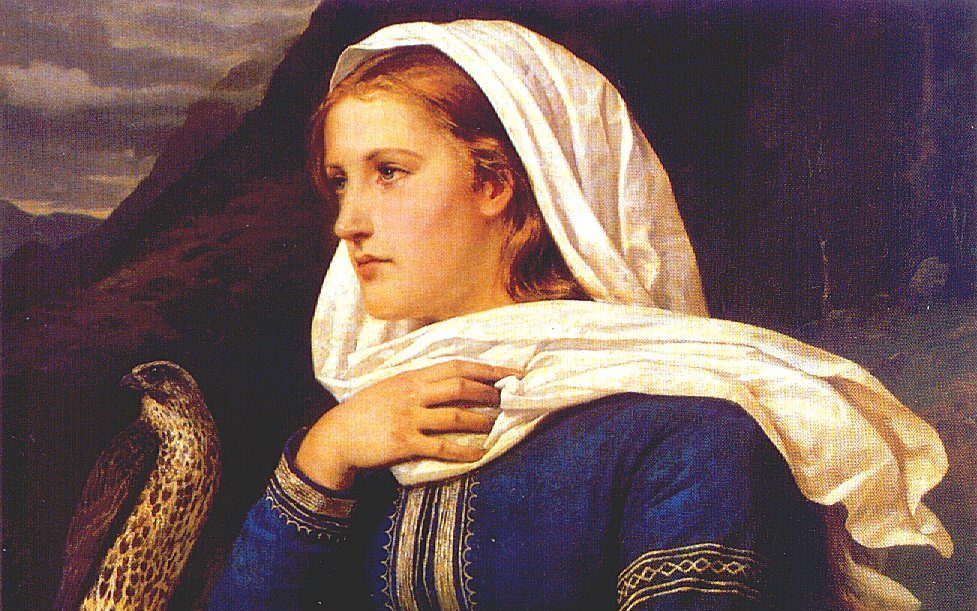Laufey or Nál (as she is sometimes called in Eddic poetry) is mentioned in passing Nordic texts such as the Gylfaginning and Skáldskaparmál in the Prose Edda, but little is known about her. She's a jötunn or a Frost giant, the mother of Loki, and her name roughly translates to leaves or foliage.
Laufey and Loki
Laufey’s most significant role in Icelandic poetry is her connection to the god of mischief, Loki. She was the spouse of Fárbauti, the King of the Frost giants, whose name translates to a dangerous hitter.
In Norse mythology, Loki is referred to as matronymic Loki Laufeyjarson or the son of Laufey, which is a little unusual.
Typically, names utilize a patronymic origin (using the father’s name), but for Loki, he uses his mother’s last name, which may indicate Loki’s playfulness. The reason for this is speculated but remains unknown.
Even though Laufey was considered a Frost giant, she is sometimes referred to as a member of the Æsir (rather than a jötunn). Therefore, her son Loki is regarded as an Æsir as well.
Loki, the trickster, sits among notable Æsir gods such as Odin, Thor, Tyr, Frigg, and other Norse gods in Asgard, thanks to his biological mother’s lineage and not his father’s.
In addition to Loki, Laufey had two other children named Býleistr and Helblindi. Much like Laufey, her other children are not mentioned often in Skaldic poetry, and very little is known about them outside of being Loki’s brothers.
Laufey’s Attestations in Old Norse Literature
Laufey doesn’t show up often in Norse poetry. However, Snorri Sturluson makes a few connections between Laufey and the Norse gods, most notable in the Gylfaginning.
She is referenced most in the Gylfaginning when Loki is introduced as Loki Laufeyjarson, and it also introduces his brothers.
While she is listed in passing in much of the Prose Edda, one section of the Skáldskaparmál (the last section called Nafnaþulur) details the various gods and their classifications. Snorri Sturluson deduces in the Nafnaþulur that Laufey is listed as a Ásynjar (female version of Æsir), which lends a clue as to why Loki found himself a home in Asgard with other Norse Æsir gods.
In the Sörla þáttr (Icelandic saga), we learn that the goddess Laufey and Nál are the same person. In this passage, we know a little about Laufey’s physical characteristics. She’s described as thin and weak, like a needle, which is why she is referred to as Nál or needle.
It’s important to note, however, that the Sörla þáttr is a relatively newer Norse text written by Christians in the 14th century. While it provides insight into the Norse gods, some scholars (such as John Lindow) feel that it isn’t entirely accurate.
Laufey in Norse Mythology Vs. MCU
When it comes to the MCU, there are some things that Marvel gets right and some things they get wrong. Their account of Laufey, as depicted in the original movie, is something that they got wrong.
Laufey, in classic Norse Mythology, is Loki’s mother. In the original Thor movie, Laufey is the King of the Frost giants and Loki’s father. In Norse texts, Fárbauti is the King of the Frost giants and Loki’s father.
*Make sure to check out my article titled What Did Marvel Get Right About Norse Mythology?
Laufey’s Role in Norse Mythology
Despite not much being known about Laufey, she has a very influential role in Norse mythology for being the biological mother of Loki.
Loki plays a significant role in the lives of Asgardians such as Thor, Odin, and Freyja. Laufey’s grandchildren (Angrboda and Loki’s children) are Hel (the goddess of death), Jörmungandr (the World Serpent), and Fenrir (who kills Odin at Ragnarök).

